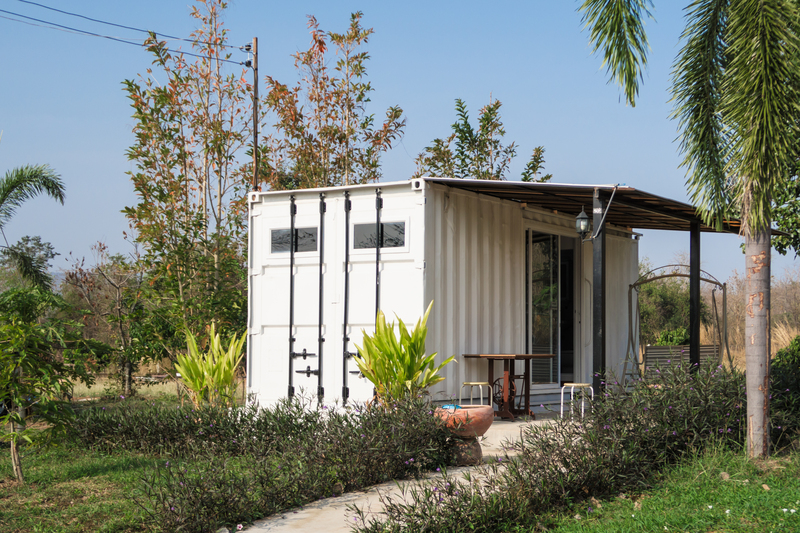Waste Container Protocols
Posted on 28/09/2025
Waste Container Protocols: A Comprehensive Guide
Introduction to Waste Container Protocols
Waste handling and disposal have become significant aspects of environmental management. Proper waste container protocols ensure that waste is handled responsibly, reducing potential hazards to human health and the environment. These protocols cover a range of practices, from waste segregation to container labeling and maintenance.

Importance of Waste Segregation
Proper waste segregation is a critical first step in waste management. It involves sorting waste at the source into distinct categories such as biomedical, chemical, radioactive, and general waste. Segregation simplifies further waste treatment and recycling processes, ensuring that hazardous materials do not contaminate non-hazardous waste streams.
- Biodegradables: Organic waste like food scraps and yard waste.
- Recyclables: Materials like paper, plastic, glass, and metals.
- Hazardous Waste: Includes solvents, paint, and electronic waste.
Labeling and Color Coding
Labeling and color coding are essential for identifying waste containers quickly and accurately. This minimizes the risk of improper disposal and ensures that waste handlers can adhere to safety protocols. For example, biohazard containers are often marked with a specific symbol and color to denote the danger.
Proper Sealing and Storage
Effective protocols require that waste containers be sealed properly to prevent leaks and spills. Containers should be stored in a secure area away from public access and natural elements. Regular inspections should be conducted to ensure the integrity of the containers.
- Sealing Methods: Use airtight lids for hazardous materials to prevent exposure.
- Storage Areas: Designate specific areas for different types of waste to minimize cross-contamination.
Maintenance and Inspection
Routine maintenance and inspection are vital for the longevity and safety of waste containers. Regular checks can identify wear and tear that might lead to leaks or spills. Additionally, maintaining a log of inspections helps in accountability and future planning.
- Checklist for Inspections:
- Check for cracks, leaks, and corrosion.
- Ensure labels and color codes are intact.
- Verify that seals are secure.
Regulatory Compliance
Adhering to local, state, and federal regulations is non-negotiable. Non-compliance can result in severe penalties, including fines and operational shut-downs. Staying updated with the regulations ensures that the waste management program is both effective and lawful. Agencies like the Environmental Protection Agency (EPA) provide guidelines on waste handling that must be followed.
Pros and Cons of Waste Container Protocols
Pros
- Health and Safety: Proper protocols reduce exposure to hazardous materials.
- Environmental Protection: Ensures waste is treated and disposed of responsibly, reducing the environmental footprint.
- Regulatory Compliance: Avoids fines and legal issues.
Cons
- Cost: Initial setup and maintenance can be expensive.
- Complexity: Multiple regulations and guidelines can be challenging to navigate.
- Time-Consuming: Regular inspections and compliance checks require time and resources.
Tips for Effective Waste Container Management
- Training: Regularly train staff on waste management practices and protocols.
- Audit: Conduct regular waste audits to identify areas for improvement.
- Technology Integration: Utilize technology for better tracking and management of waste containers.
- Community Involvement: Encourage community participation in waste segregation and recycling programs.

Key Takeaways
- Proper waste segregation is vital for effective waste management.
- Labeling and color coding enhance the identification and handling of waste.
- Regular maintenance and inspections ensure the safety and integrity of waste containers.
- Adhering to regulatory guidelines helps in maintaining compliance and avoiding penalties.
- Effective waste container management requires ongoing training and audits.
Conclusion
Waste container protocols are an essential aspect of environmental management and public safety. They ensure that waste is handled, stored, and disposed of in a manner that minimizes risk to humans and the environment. While there are challenges associated with implementing these protocols, the benefits far outweigh the drawbacks. With regular training, proper labeling, and adherence to regulations, organizations can significantly improve their waste management practices.
By following proper waste container protocols, you can ensure a safer, cleaner, and more sustainable environment.



